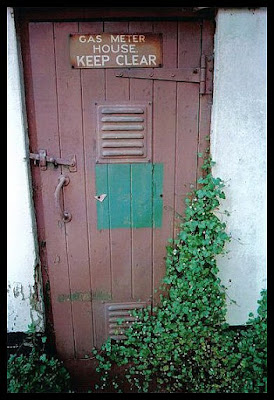The lovely town of Ottery St Mary takes its name, in part, from the magnificent parish church of St Mary. Although an earlier church existed before the Conquest (benefacted by Edward the Confessor and consecrated by Bishop Bronescombe in 1260), it was rebuilt circa 1330 and was a legacy of John de Grandisson, Bishop of Exeter (1327-69). St Mary's is a scaled-down version of Exeter Cathedral, on which it was modelled, and is a Grade I British Listed Building.
The church contains ten misericords dating from 1350, five showing the arms of Bishop John de Grandisson. The church interior also has two carved stone green men. The poet Samuel Taylor Coleridge, who was born in the town, is commemorated in a small stone plaque situated on the south churchyard wall. Other interesting features include the tomb of Otho de Grandisson and his wife, and the altar screen and wooden eagle given by Bishop Grandisson.
It almost looks like a fairy-tale castle on the north side (above) and the interior is absolutely stunning. Far from being gloomy, the Mediaeval age was one of colour, and many facades which are now bare stone (such as the complex statuary on the front exterior of Exeter Cathedral) were originally highly painted in bright blues, reds, greens and gold. St Mary's conjures up, for me, the age of heraldry, and an area where the ordinary townsfolk could enjoy a rich and wealthy interior in which to glorify their God.
Although most of the stone is left bare, as is usual these days, the ribs on the rib vaulted ceiling have been picked out in blue, red and gold with added gilt on the bosses.
Where the stone has been left bare the effect is still completely breathtaking.
The perpendicular North Dorset Aisle.
I've visited the church several times; these two photos showing how it looks on a sunny Summer day with golden light flooding the aisle.
The West Apostles window.
The sanctuary is beautifully decorated in red and gilt, with an exquisite carved reredos, below.
Looking from the chancel down the nave.
And, like Exeter Cathedral, there are aisles either side to access behind the sanctuary; a small ambulatory area behind the altar screen, with the Lady Chapel behind that. The Chapels of St Stephen and St Lawrence are either side of the Lady Chapel.
The 14th century astronomical clock in the South transept bell tower (below) is attributed to Bishop Grandisson. It adheres to Ptolemaic Cosmology, with the Earth at the centre of the solar system, and still works to this day. It is one of the oldest surviving astronomical clocks in the country, along with another in Exeter cathedral.
The South transept also contains this lovely mosaic tiling by William Butterfield, as directed by the first Baron Coleridge during mid 19th century restorations.
No less gorgeously decorated; the marble font, below, also by William Butterfield.
The gorgeous old south door, which is the entrance in use.
Then to finish up with is this lovely old door inside the church. Such a beautiful building with its breathtaking architecture and lots of interesting, and delightful things to see inside.


















































































